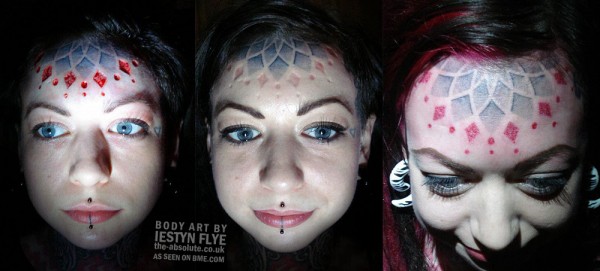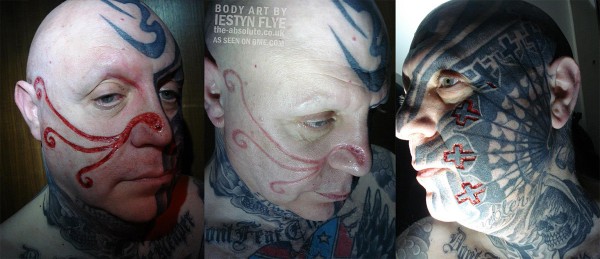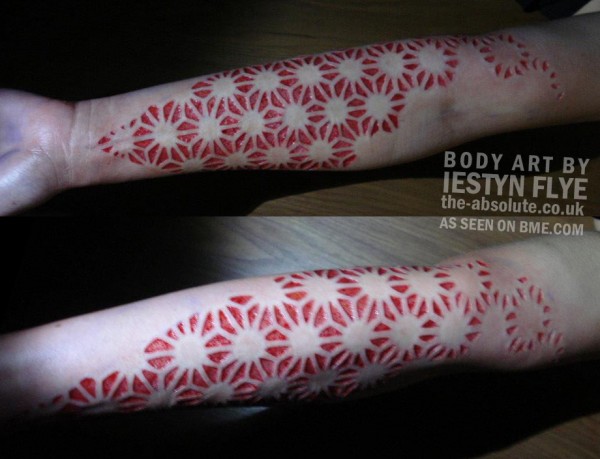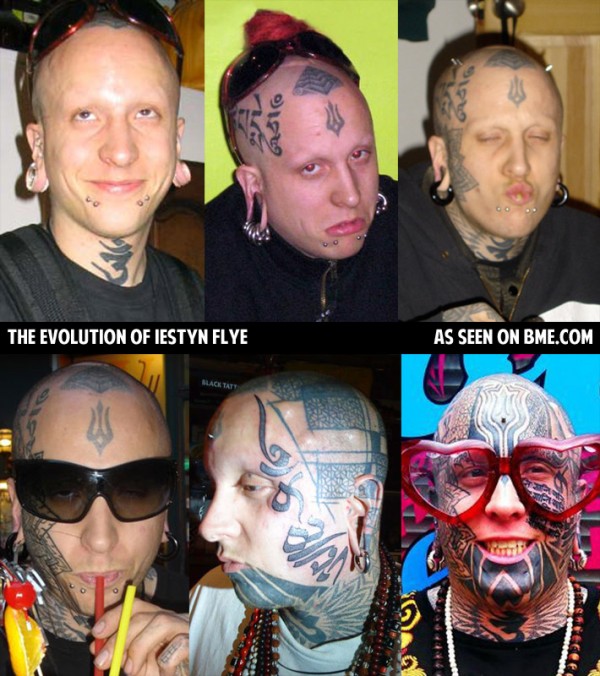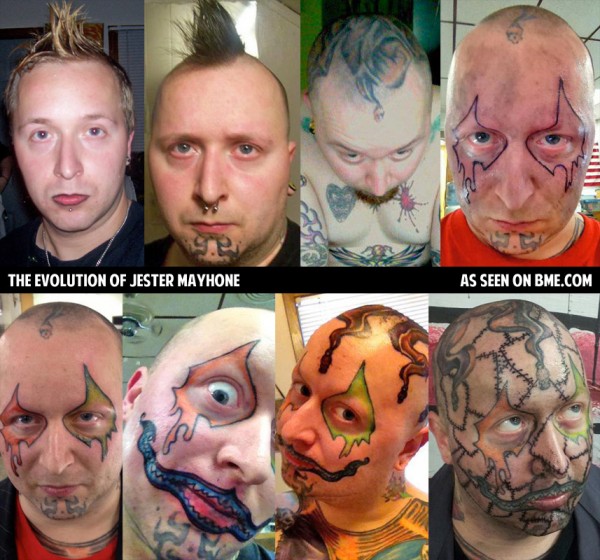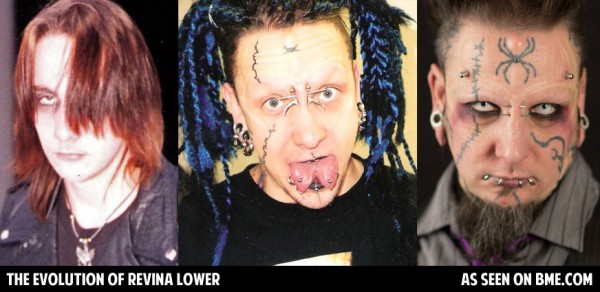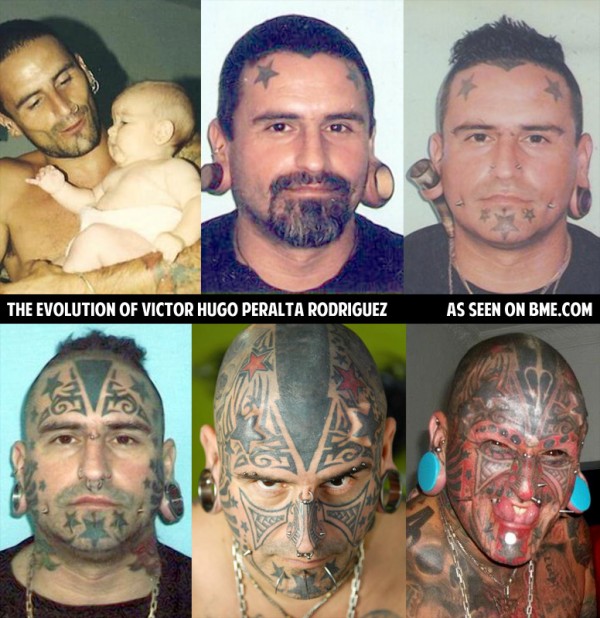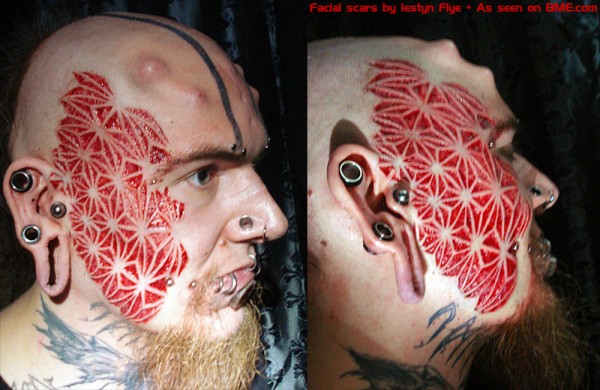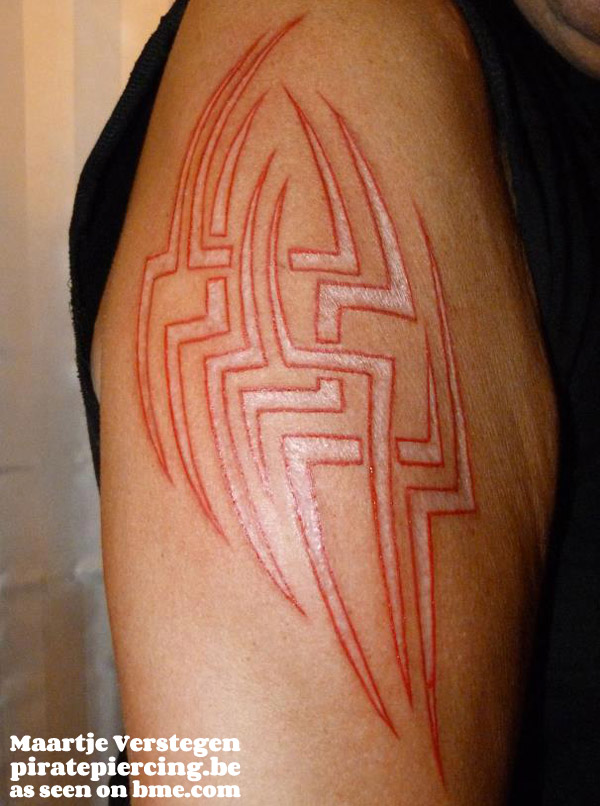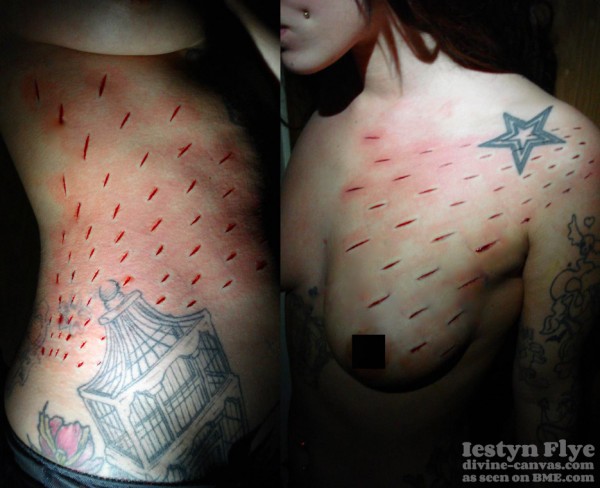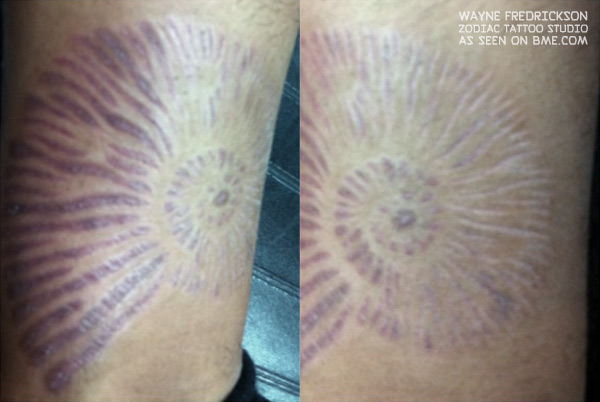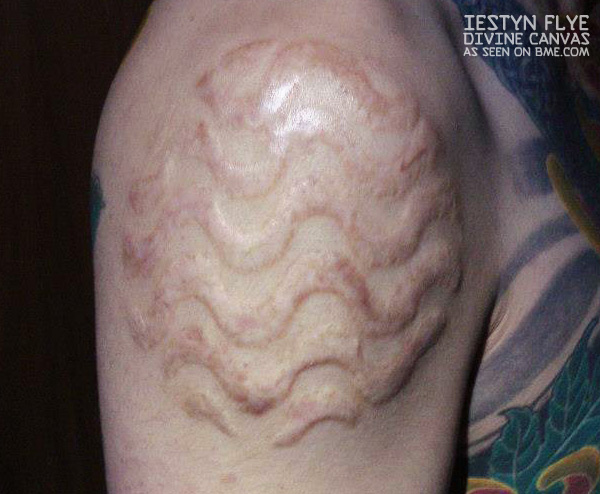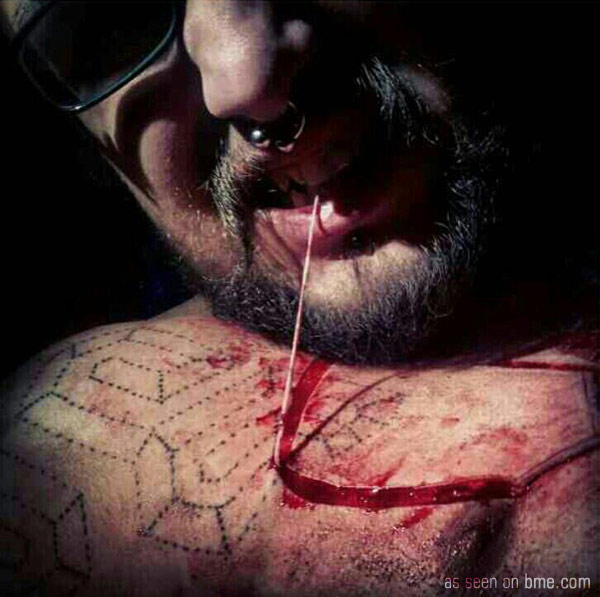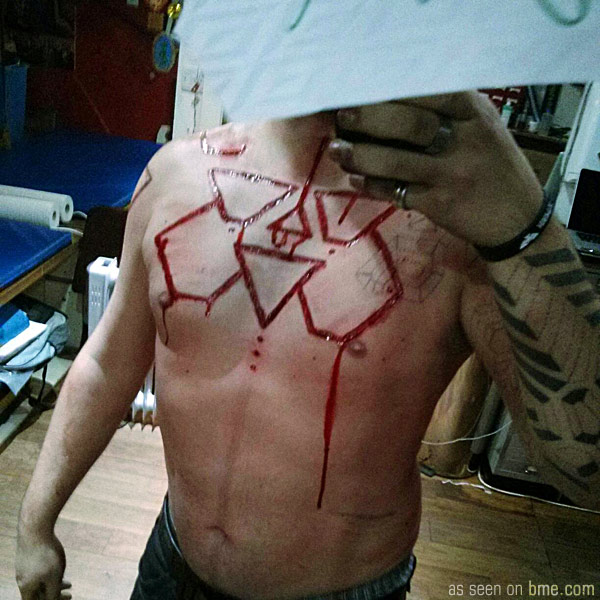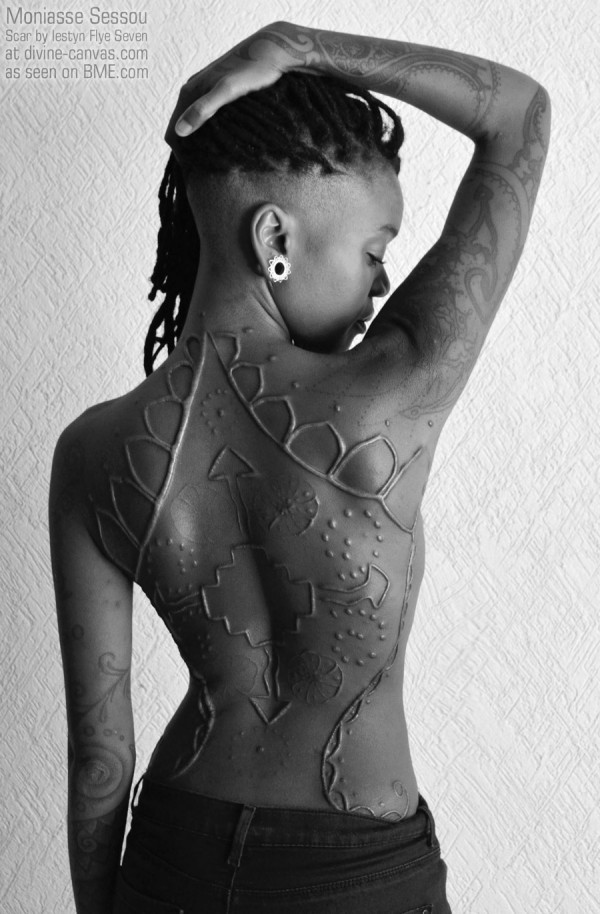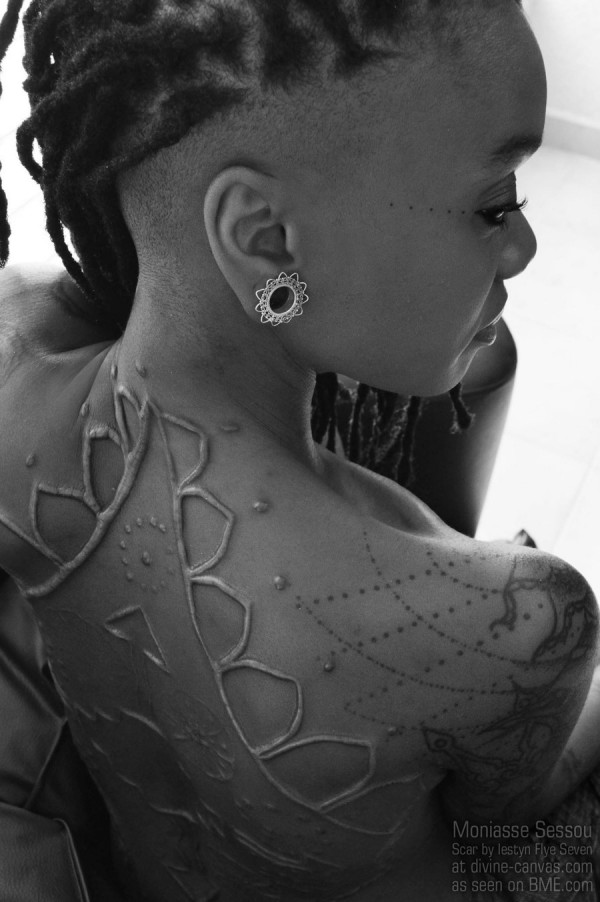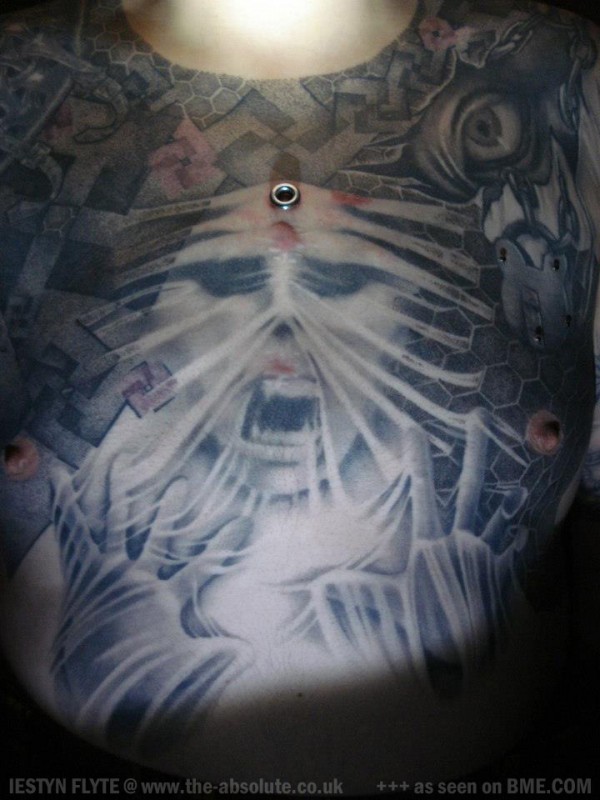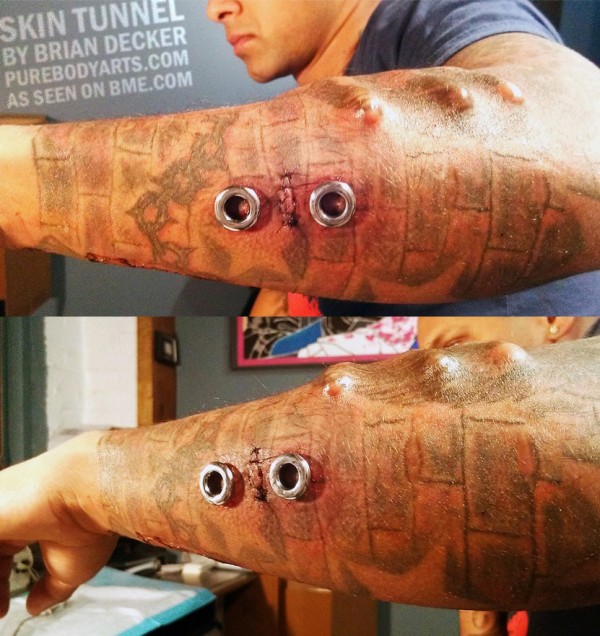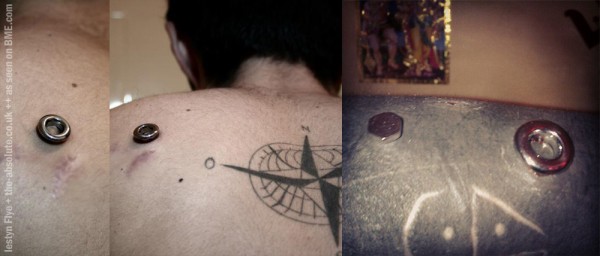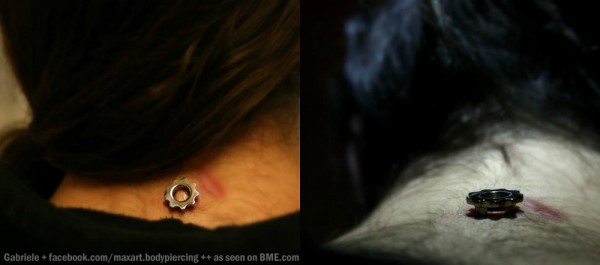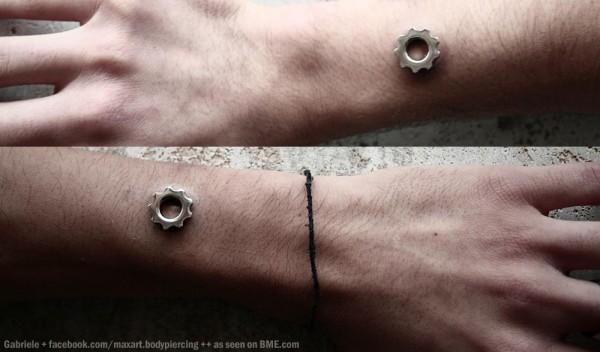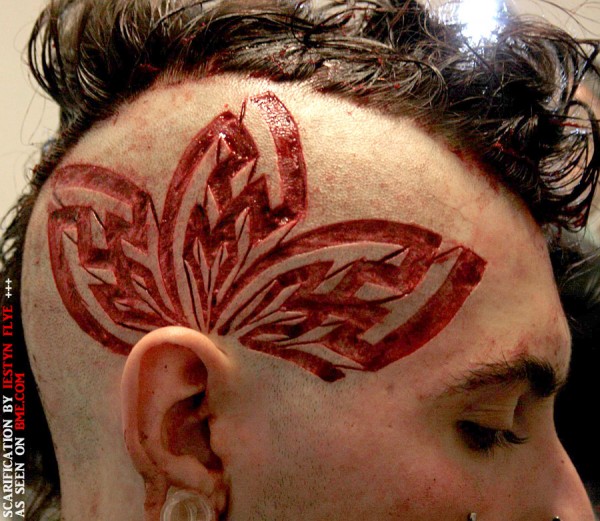Gosh, I’d forgotten both how fun and how difficult posting here is for me. I’m simultaneously excited and nauseous! But before I call it a night, I wanted to share a few more pieces by Iestyn Flye that he’s posted while I’ve been largely offline. I should also mention, if you didn’t catch it earlier today, that he’s now online at the-absolute.co.uk. Anyway, I will try and post a bit more this weekend but I can’t promise a lot.
This first piece is really interesting and not something you see every day (for all of these I suggest zooming in for a closer look of course). It begins life (the left and middle image) as a skin-removal scar, which is then accentuated once it’s well healed using red dotwork tattooing.
Next, a gorgeous example of facial scarification, with an organic free-flowing piece on one side that has a sort of early Celtic/Viking feel to it, balanced and contrasted on the other side of the face with a series of geometric crosses that instead of being free-flowing, integrate tightly and precisely into the tattoo work done earlier. A stunning and world-class creation.
Finally, the some mind-blowing geometric scarification that would be impressive if done as a tattoo, and unbelievable when done as a scar.
